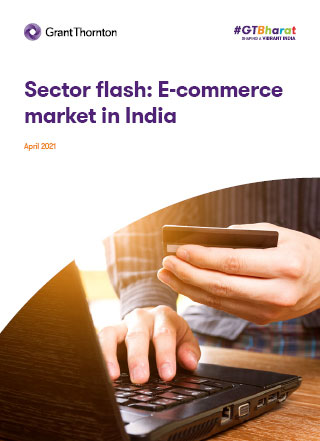The COVID-19 pandemic has disrupted the way people buy products and services. The existing norms of social distancing and limited mobility of individuals have tilted consumers towards e-commerce.
Key highlights of the Report
Consumers have switched from shops, supermarkets and shopping malls to online portals for the purchase of products, ranging from basic commodities to branded goods.
The e-commerce sector has responded positively and leveraged the opportunity presented. Innovative solutions, along with increase in the span of coverage within the e-commerce gamut, have led to unprecedented growth and launch of new digital businesses.
E-commerce companies continue to expand beyond the metropolitan cities to increase their reach.
Key highlights
Market landscape
- E-commerce in India continues to gain traction, with total market size expected to reach USD 188 billion by 2025
- 974 million internet users, 220 milllion online shoppers in India by 2025
- With various sectors going online, e-commerce continues to operate through multiple channels – based on industry and business models
- Most segments are anticipated to witness significant growth. For instance, fashion is one of the major categories searched on various e-commerce sites. Consumer buying patterns have changed within categories including health and pharma, groceries and food delivery have witnessed growth
- Significant opportunity to improve the online shopping penetration, especially in the auto sector
E-commerce channels are becoming the preferred mode of shopping, surpassing brick and mortar and kirana stores
Emerging Trends
- According to a Cyber Media Research (CMR) report, the average usage of smartphones in India is estimated to have increased by 25% to almost seven hours a day, as people depend on gadgets for work/study from home and entertainment amidst the pandemic
- The country has taken rapid strides in advancing government e-payments, as a result it has moved up to 28th rank in 2018 from 36th in 2011 in Government E-payments Adoption Ranking (GEAR)
- The value of mobile payment app Bharat Interface For Money (BHIM) transactions increased significantly post 2018
- Capitalising on the strengths of large existing customer base and efficient payment gateways, banks are not only complementing the e-commerce players, such as Amazon and Flipkart, and non- bank payment aggregators, but also improving the backend supply chain of e-commerce in India
- Delivery and fulfilment companies strengthen supply chain
- Companies across sectors today are strategising and revolutionising their business around a hyperlocal delivery model
- Online car trade market has also witnessed a surge
Key market developments
- Government regulations: Increased digital payments and customer confidence, Increase influx of foreign investments, Regulation will ensure fair and transparent practices in the e-commerce sector
- Growth drivers: Demography, rising smartphone an dinternet penetration, increasing government support, improved digital infrastructure
- Challenges: Cash on delivery, uneven address and postal codes, delayed deliveries, high returns
Outlook
- Auto, grocery, education and pharmacy markets are also expected to witness a surge in demand. Focus will be on smaller towns, technological innovations, improved online purchase paths









